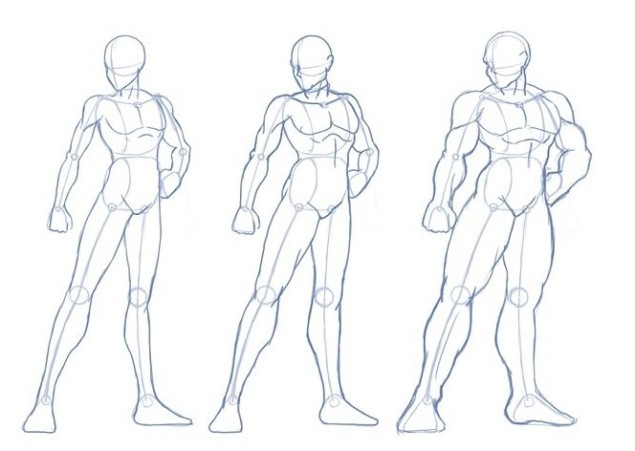
When working on a tougher design, sometimes you'll find yourself clinging stubbornly to certain elements that you just WANT. But if you don't want your 'before and after' comparisons to be that dramatic, you should do as much as you can behind the scenes. This is okay! And it goes to show the power of iteration~. *Sometimes (in fact, a lot of the time) this happens naturally as you use the character in a comic, as you've probably noticed by reading older works (e.g. In this way, each successive sketch will be closer to the ideal than the last: you will gradually change the design* into something that's comfortable to draw and easy to recognize, two very important qualities for main characters especially. If all your 'running' sketches look better with a certain type of shirt, maybe that's the one the character should wear, especially if they're meant for an action story. If you keep on forgetting to include a certain detail, maybe you should omit it altogether. You want to cut out as much unnecessary junk as you can and strip the character down to only the most memorable essentials. If you're an artist who thrives on simplicity (like me), this is very important. Do it freely: pay less attention to how 'accurate' each sketch is to the initial design and more attention to whether the character is recognizable.Īnd most importantly, pay attention to what your tendencies are: which parts do you enjoy drawing the most? The least? Which parts tempt you to run back to the original design to make sure you're drawing them right? Which parts do you keep on forgetting to include? Sometimes the character design process surprises you that way~īy this I mean, draw the character again and again and again. It also has a completely different vibe leaning more toward 'otherworldly demon' and veering away from 'knight', but I liked it so much that I honestly didn't care.

^^Īnyway, you can see that the third design is much more cohesive than the first two. Lemme tell you, I didn't even know I could draw liquid that way until I let myself try. In the beginning, I was designing this character with a lot of themes in mind: 'black bile' (so, 'liquid'), 'knight', 'otherworldly demon', 'coagulated material', 'poisonous gas'.those are themes that are hard to fit together in the first place, let alone on one design that's supposed to be simple and almost all one color.but in my last attempt, I decided to settle on one theme- just 'liquid'- and build from there. Here's an example from my own experience. If your designs are too chaotic or unfocused, this will help you to calm them down into something that's easier to visualize and build. It's also where your shape language tools will come in handy: say you want a design that feels violent and shocking: you see lots of jagged edges and sharp angles in there, right? Try taking it a step further and limiting yourself to just lightning imagery, or just flames, or just stars.

This is most helpful when you're doing more abstract designs: like non-humanoid aliens, or inanimate objects like furniture and vehicles.even clothes. There will be plenty of holes in it, of course: for instance, what are they wearing under that billowing cape.? Maybe you don't know right away, but you can fill it in later. What do you see in your mind's eye? The character's cape, billowing in the wind? Their long ponytail whipping around as they leap over the rooftops? Reflected sunlight gleaming on the row of buckles on their boots? That's the stuff you wanna get down first. But lately I've been trying the opposite, and honestly, I get better designs that way.įirst off, if you design a character based on a moving figure, you more or less eliminate those "good concept, awkward execution" designs that look good as a static image from the perfect angle, but quickly lose comprehension when you actually have to use them in a work.Īnd secondly, it helps you quickly plan out the basic design elements that you want to include, before you get bogged down in details. 6_6Ī lot of the time when I start a character design, I find myself fighting off the dynamic animated figures I see in my head in favor of a clearer image that just 'looks nice'. It's only recently (now that I have three big ongoing comics and a possible 4th on the way) that I've started to take my lifelong passion seriously, so I've developed some strategies to produce good character designs without relying solely on inspiration, which, as every mature creative knows, can only get you so far. Even professionals who already know all of that still have to go through a process to create a good character design. Like, specifically the process, not all that stuff about shape language and silhouettes and whatnot.


 0 kommentar(er)
0 kommentar(er)
